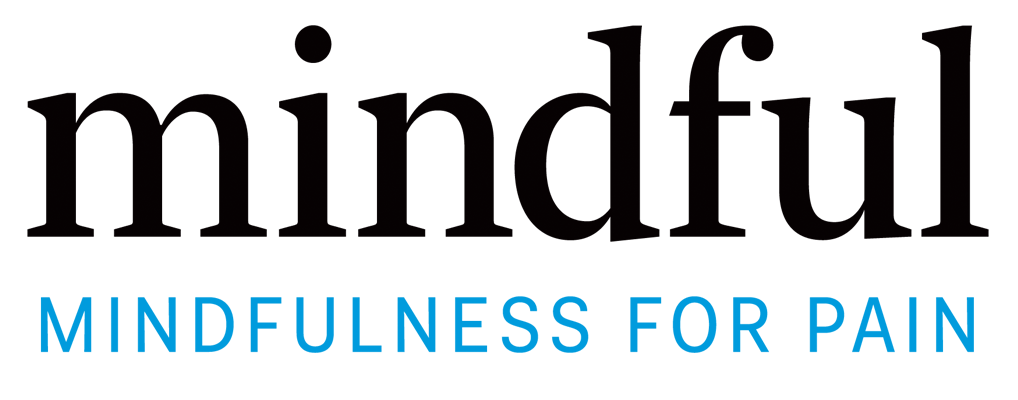Listen to this article
You are in pain. You have been in pain for a while. There might be a good reason for your pain—or there might not be. You have done everything you can about it. And it’s still here. If your pain were a friend, you would have deleted their email address and phone number by now. If it were a marriage, you’d be filing for divorce. If it were a roommate, you would have moved out. But with pain you can’t. You can rage against it, you can declare war on it, you can pity yourself. But the pain is still here.
Mindfulness can help you learn a different way to relate to the pain, while still doing your best to heal it.
You are not your pain
Marcus came to my mindfulness class because of chronic pain after a car accident. Rehabilitation, physical therapy, and acupuncture had helped him to lower the amount of pain medication he was on but he was still far from pain-free. His doctor had sent him to the mindfulness class and he was skeptical, but at this point, a year after the accident, he was willing to give it a try.
Marcus learned to practice mindfulness: gentle moment-by-moment awareness of his experience. He learned to pay attention to the constantly changing sensations of his breath as part of the meditation. He also learned to scan through his entire body and become aware that most parts of his body were actually not in pain. Once he started to pay attention, he was surprised that his pain actually wasn’t always the same—that it fluctuated not only in intensity but also in other ways.
Sometimes it was more sharp and stabbing, at other times more dull and tense. He also noticed that stress in other areas of his life—like with his partner or at work—made the pain worse. In addition, he found that regular meditation seemed to lower his overall stress levels. He also started to notice how much goodness there was in his life and how many chances for joy during the day. He just had stopped looking because the pain had felt so all-encompassing.
At the last class, Marcus shared his biggest take-away with us. He said, “I realize that I am not my pain. I experience pain but this is not who I am. I am so much more.”
The pain story
Our brains are made to learn from the past and to anticipate the future. With chronic pain we are not only feeling the pain of this moment, but we also feel the pain of the past and the anticipated pain of the future.
When we are in pain, we are not only feeling it the way it is right now, but our perception is colored by the way it felt before, why we have the pain, why it’s still here and the impact that the pain has had on our life. We also often worry about what will happen with the pain in the future and the implications this could have on our life in terms of work, finances, relationships, mobility, and so on. We call this the pain story. No wonder even moderate physical pain can feel just awful and scary!
The Pain Equation:
The history and story of why we have the pain
+
what we are afraid could happen with the pain in the future
+
the way the pain feels in this moment
=
The amount of pain we feel
Three pain areas mindfulness helps with:
Mindfulness can help to break the big, overwhelming experience we call pain down into more manageable chunks.
- The actual physical sensation. Where do you feel the pain in the body? What are the qualities of the pain? Is it sharp, dull, stabbing, throbbing, tearing, hot, tense, fluctuating? Is it there all the time or is it sometimes absent? Do the characteristics change? What about the rest of the body? Is it one area that is painful or several? Can you also be aware of areas that are not in pain? How much of your body is not in pain?
- The emotions. What emotions are present with the pain? Anxiety? Anger? Frustration? Impatience? Grief? Where can you feel those in the body? Emotional pain adds to physical pain! Emotions bring on thoughts.
- The thoughts around the pain, the pain story or the meaning the pain has in our life. These thoughts arise together with the emotions: Will this ever go away? Why is this still here? What does that mean for my future? These thoughts bring on emotions.
These three areas are closely interconnected and influence each other. But they are not the same.
With mindfulness and compassion practice, we learn that we don’t have to follow and believe our thoughts. We can let them move through our awareness like a river that keeps flowing. We learn to not take emotions so personally. We learn that they will change and at times disappear if we don’t reinforce them. And we learn to watch the experience of pain from a little more distance—like an eagle’s view. And maybe we even start to have some compassion towards ourselves for the fact that we are in pain.
Mindfulness practices are great tools to help us live with more ease and joy in the midst of the pain. At long as it has moved in, we might as well do all we can to get along with this roommate called pain.




